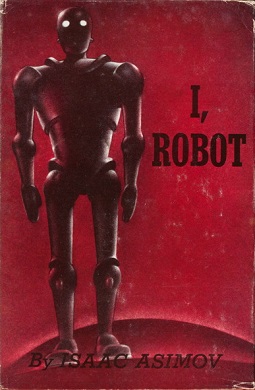
I, Robot is a fixup collection made up of science fiction short stories by American writer Isaac Asimov. The stories originally appeared in the American magazines Super Science Stories and Astounding Science Fiction between 1940 and 1950 and were then compiled into a single publication by Gnome Press in 1950, in an initial edition of 5,000 copies.
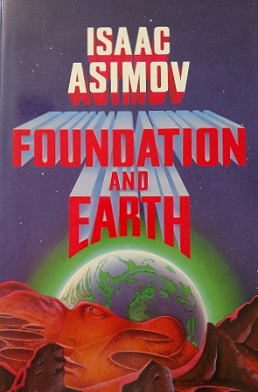
Foundation and Earth is a science fiction novel by American writer Isaac Asimov, the fifth novel of the Foundation series and chronologically the last in the series. It was published in 1986, four years after the first sequel to the Foundation trilogy, which is titled Foundation's Edge.
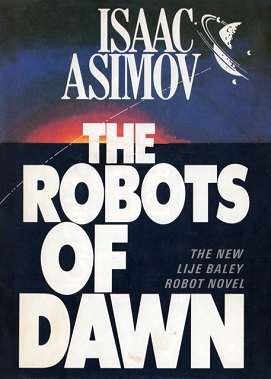
The Robot Series is a series of thirty-seven science fiction short stories and six novels created by American writer Isaac Asimov, from 1940 to 1995. The series is set in a world where sentient positronic robots serve a number of purposes in society. To ensure their loyalty, the Three Laws of Robotics are programmed into these robots, with the intent of preventing them from ever becoming a danger to humanity. Later, Asimov would merge the Robot series with his Foundation series.

The Three Laws of Robotics are a set of rules devised by science fiction author Isaac Asimov, which were to be followed by robots in several of his stories. The rules were introduced in his 1942 short story "Runaround", although similar restrictions had been implied in earlier stories.
A positronic brain is a fictional technological device, originally conceived by science fiction writer Isaac Asimov. It functions as a central processing unit (CPU) for robots, and, in some unspecified way, provides them with a form of consciousness recognizable to humans. When Asimov wrote his first robot stories in 1939 and 1940, the positron was a newly discovered particle, and so the buzz word "positronic" added a scientific connotation to the concept. Asimov's 1942 short story "Runaround" elaborates his fictional Three Laws of Robotics, which are ingrained in the positronic brains of nearly all of his robots.
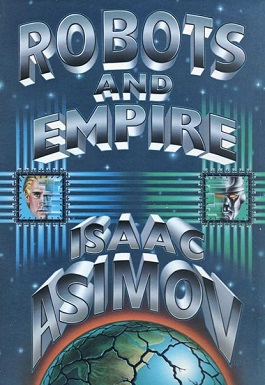
Robots and Empire is a science fiction novel by the American author Isaac Asimov, published by Doubleday Books in 1985. It is part of Asimov's Robot series, which consists of many short stories and five novels.
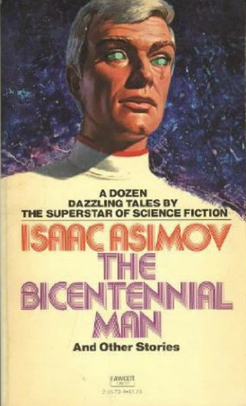
"The Bicentennial Man" is a novelette in the Robot series by American writer Isaac Asimov. According to the foreword in Robot Visions, Asimov was approached to write a story, along with a number of other authors who would do the same, for a science fiction collection to be published in honor of the United States Bicentennial. However, the arrangement fell through, leaving Asimov's the only story actually completed for the project. Asimov sold the story to Judy-Lynn del Rey, who made some small changes to the text. Asimov restored the original text when the story was collected in The Bicentennial Man and Other Stories (1976).

The Naked Sun is a science fiction novel by American writer Isaac Asimov, the second in his Robot series. Like its predecessor, The Caves of Steel, this is a whodunit story. It was first published in book form in 1957 after being serialized in Astounding Science Fiction between October and December 1956.
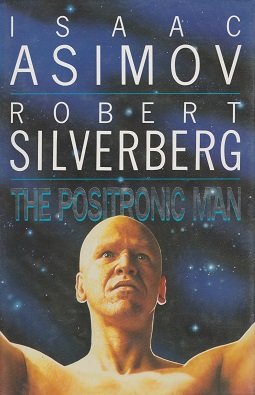
The Positronic Man is a 1992 novel by American writers Isaac Asimov and Robert Silverberg, based on Asimov's 1976 novelette "The Bicentennial Man".
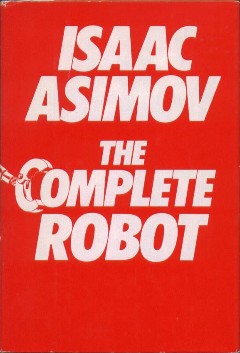
The Complete Robot (1982) is a collection of 31 of the 37 science fiction short stories about robots by American writer Isaac Asimov, written between 1939 and 1977. Most of the stories had been previously collected in the books I, Robot and The Rest of the Robots, while four had previously been uncollected and the rest had been scattered across five other anthologies. They share a theme of the interaction of humans, robots and morality, and put together tell a larger story of Asimov's fictional history of robotics. The stories are grouped into categories.
"Robbie" is a science fiction short story by American writer Isaac Asimov. It was the first of Asimov's positronic robot stories. In 2016, "'Robbie" won a retrospective 1941 Hugo Award for best short story. "Robbie" was the fourteenth story written by Asimov, and the ninth to be published. It was the first story in Asimov's Robot series.
"Catch that Rabbit" is a science fiction short story by American writer Isaac Asimov. It was first published in the February 1944 issue of Astounding Science Fiction and reprinted in the collections I, Robot (1950) and The Complete Robot (1982).
"Liar!" is a science fiction short story by American writer Isaac Asimov. It first appeared in the May 1941 issue of Astounding Science Fiction and was reprinted in the collections I, Robot (1950) and The Complete Robot (1982). It was Asimov's third published positronic robot story. Although the word "robot" was introduced to the public by Czech writer Karel Čapek in his 1920 play R.U.R., Asimov's story "Liar!" contains the first recorded use of the word "robotics" according to the Oxford English Dictionary. The events of this short story are also mentioned in the novel The Robots of Dawn written by the same author.
"Little Lost Robot" is a science fiction short story by American writer Isaac Asimov. It was first published in the March 1947 issue of Astounding Science Fiction and reprinted in the collections I, Robot (1950), The Complete Robot (1982), Robot Dreams (1986), and Robot Visions (1990).
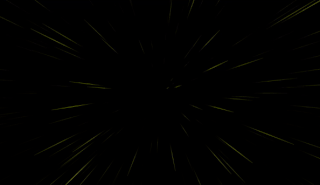
In science fiction, hyperspace is a concept relating to higher dimensions as well as parallel universes and a faster-than-light (FTL) method of interstellar travel. In its original meaning, the term hyperspace was simply a synonym for higher-dimensional space. This usage was most common in 19th-century textbooks and is still occasionally found in academic and popular science texts, for example, Hyperspace (1994). Its science fiction usage originated in the magazine Amazing Stories Quarterly in 1931 and within several decades it became one of the most popular tropes of science fiction, popularized by its use in the works of authors such as Isaac Asimov and E. C. Tubb, and media franchises such as Star Wars.
"Risk" is a science fiction short story by American writer Isaac Asimov, first published in the May 1955 issue of Astounding Science Fiction, and reprinted in the collections The Rest of the Robots (1964) and The Complete Robot (1982).
"Feminine Intuition" is a science fiction short story by American writer Isaac Asimov, originally published in the October 1969 issue of The Magazine of Fantasy and Science Fiction and collected in The Bicentennial Man and Other Stories (1976), The Complete Robot (1982), and Robot Visions (1990).
"Robot Dreams" is a science fiction short story by American writer Isaac Asimov exploring the unbalance of robot/human relationships under Asimov's Three Laws of Robotics. It was nominated for a Hugo Award in 1987. It won the Locus Award for Best Short Story in 1987. "Robot Dreams", along with 20 other short stories by Asimov, was published in Robot Dreams in 1986 by Berkley Books.
"Death Sentence" is a science fiction short story by American writer Isaac Asimov. It was first published in the November 1943 issue of Astounding Science Fiction and reprinted in the 1972 collection The Early Asimov.

Isaac Asimov's Robot City: Perihelion is a book written in 1988 by William F. Wu. It is part of the series Isaac Asimov's Robot City, which was inspired by Isaac Asimov's Robot series.










